Four days and four ways to fall in love with Iloilo
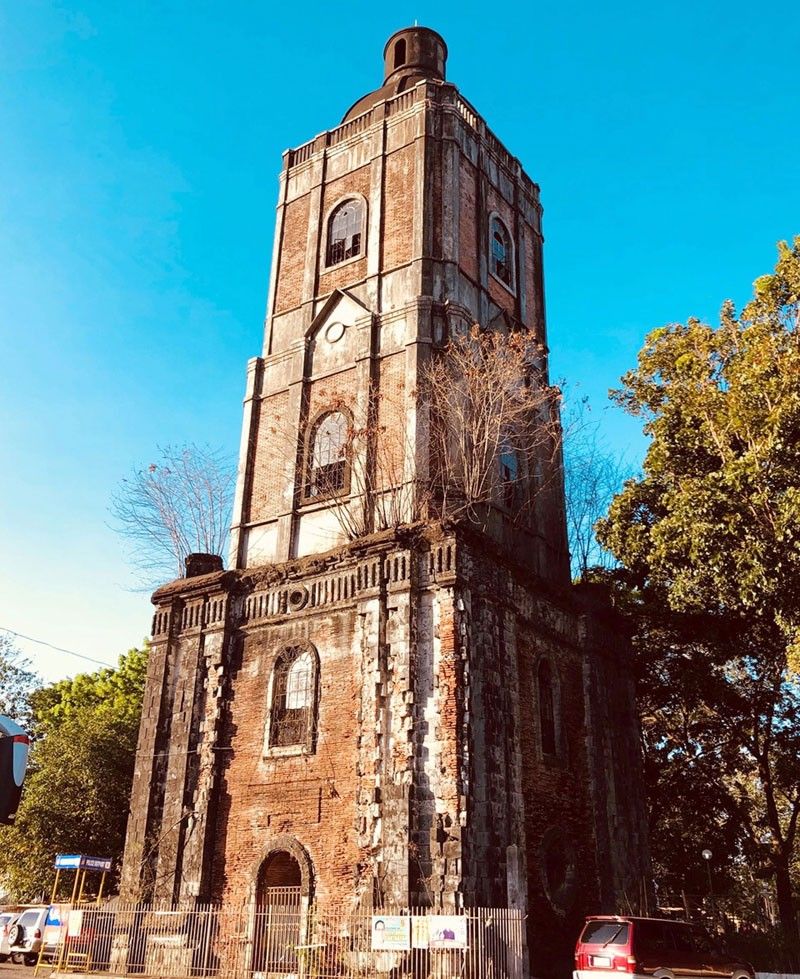
For pilgrims of faith, architecture, history and other personal pursuits, Iloilo’s Spanish colonial churches are a joy to behold.
MANILA, Philippines — Love, indeed, is lovelier the second time around. My first visit to Iloilo was limited to agricultural interests, an exhibition at the newly opened Iloilo Convention Center, an exploration of Biscocho Haus and Netong’s satellite branches, and a sighting of Guimaras on the horizon. While there were many lovely encounters on the ground, it was a passing affair. On this second trip, I discovered there is much more flavor, heritage and adventure in this part of Western Visayas for an engagement.
Appreciation for Art, Architecture and Spanish Colonial Heritage
As in most provinces in the Philippines, ancestral homes are a dime a dozen. What makes Iloilo interesting is its efforts at conservation with the conversion of the Spanish colonial homes into well-maintained museums.
Aboard the pillow-comfort and USB port equipped tour bus of Southwest Travel and Tours, we began our journey at the Iloilo Business Park where the Emperador Museum houses the Iloilo Museum of Contemporary Art (IloMoCa).
A venue for modern and contemporary artists, IloMoCa showcases an eclectic mix of media and artists. On the ground floor is Hulot, Hiligaynon for room, a space for rotational exhibitions by local and contemporary artists. In the upper floors reside the likes of Arturo Luz, Ramon Orlina, Olivia d’Aboville and a Salvador Dali.
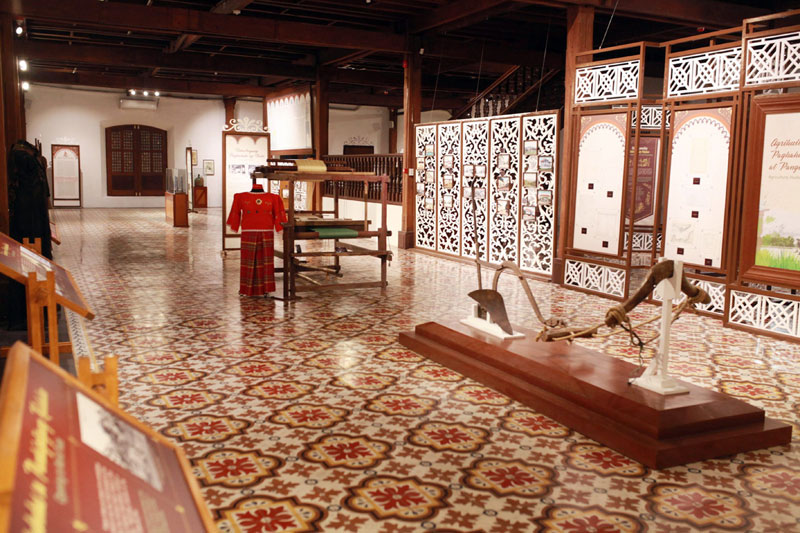
The contrast of elitist machuca tiles and the humble araro at the Museum of Economic History
From the Iloilo Business Park, we take the road to Calle Real, considered as the heritage district. The downtown of Iloilo where one can still see the old buildings of the Commonwealth era. Similar to Manila’s Escolta, the street is historic as an address for commerce and entertainment.
In the area is the Iloilo Museum of Economic History, a 19th-century building of the Elizaldes, a former trading house and, now, repository of an assortment of items related to its roots in agricultural industry, documents, personal collections and other items that take one through the economic evolution of Iloilo.
We turn into another street that leads to Camiña Balay na Bato. Dinner is served in this beautiful 150-year-old stone house designed by Anselmo Avancena, the first parish priest of Molo for Don Fernando Avanceño. Passed from one family to another, it is now under the care of the Camiñas family.
Authentic heirloom Ilonggo cuisine is prepared farm-to-table with ingredients from the Camiñas farms in Guimaras and Jaro, and follow the principles of the slow- food movement with certain dishes taking 12 hours to prepare. Testament to that is the rich, nutty, fruity and intoxicating demitasse of hot chocolate. Made ala batirol in heavy metal pitchers, it is a piping hot dream.
A place for pilgrims and prayer intentions
For pilgrims of faith, architecture, history and other personal pursuits, Iloilo’s collection of Spanish colonial churches are a joy to behold. If one is to believe in the intersection between the local Filipino belief and religious faith, first-time visitors are often granted their prayer intentions.
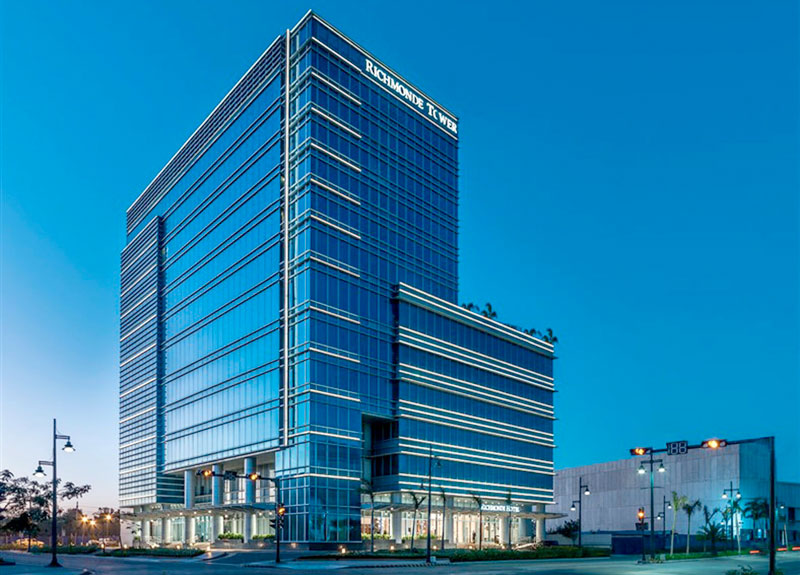
The 149-room Richmonde Hotel Iloilo
• Cathedral of Jaro, 1874. The present structure was finished under the supervision of Bishop Mariano Curatero. Also known as the “Male Church” for its all-male ensemble of saints in the main pillars. A lone female statue, Nuestra Señora de Candelaria (Our Lady of the Candles), stands enshrined at the façade over the main entrance. The 16th-century statue is said to have grown in height over the centuries, which necessitated its transfer from a small niche near the inner central spire to the outdoor balcony.
• Molo Church, 1888. Built in 1831 under Fray Pablo Montaño and completed by Fray Agapito, the church is dubbed as the “Women’s Church” with 16 images of female saints. Made of white coral rock, the gothic design features two belfries with about 30 varied sized bells that peal a symphony.
• San Joaquin Church, 1869. Built over 10 years under the supervision of parish priest Fray Thomas Santaren, the church is widely known for its limestone and coral materials, and an intricately designed frontage of a bas relief depicting the triumph of the Spanish army over the Moors in the Battle of Tetouan.
• Miag-ao Church, 1787. As inscribed on a marker, construction of this church began in 1787 while Fray Francisco M. Gonzales was parish priest of this town and Domingo Libo-on was gobernadorcillo. The church was completed in 1797. It served as a fortress against Muslim raiders. In 1898, during the revolution, the church was destroyed, subsequently rebuilt; it was damaged by earthquake in 1948. Restoration work began in 1960 and completed in 1962.
• Garin Farm Pilgrimage Resort, 2000s. It is the only modern pilgrimage destination in the collection. Beyond the name, Garin Farm is an inland resort for a spiritual journey. With approximately, 430 to 480 steps to a heavenly spot, it is best to begin the day early and take steps slowly. Traveling from the birth to ascension of Jesus, one reflects upon each step. Landing points feature life-sized dioramas and an opportunity to take a breather. The destination at the top is a discovery through a quiet tunnel and a blinding vision of heaven.
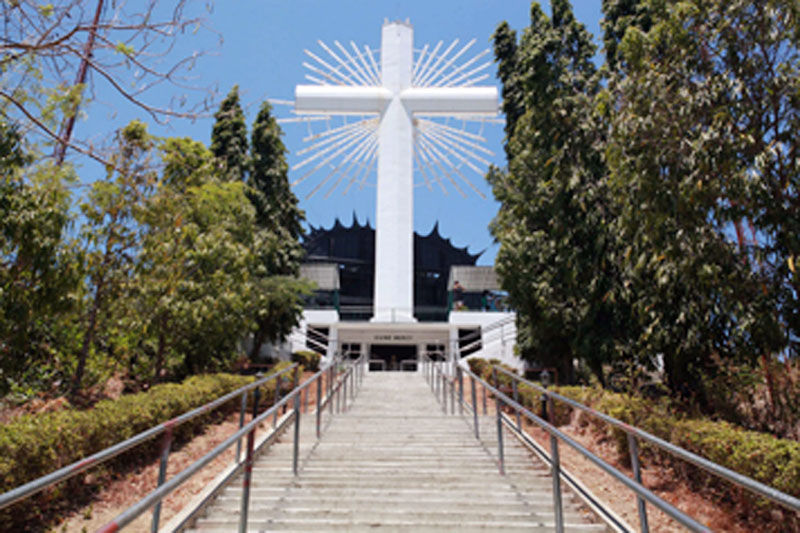
400-plus steps to reflection at Garin Farm
Mangoes, Monks and light on Guimaras
Best known for export-quality mangoes, Guimaras boasts the sweetest and fairest of them all. But, the island has other secrets waiting to be discovered.
We started the day at the National Mango Research and Development Center. Here, mangoes are harvested throughout the year to meet export demand. We were fortunate to have arrived at just shy of harvest cycle for this period. It was at the perfect state for travel. By the time you are reading this, the ones I picked would be perfectly ripened. Mango-picking is a tactile connection to the food we eat, and a way to commune with the farmers. My agricultural interests remain bonded with the ground and the people whose hands nourish the earth.
With similar hands, the Trappist Monastery is built over the labors of monks and the indigenous people (IP) communities it supports. The store carries a trove of local delicacies, wines, juices, handwoven novelties and other items to discover. But the hands that touched me most was a chance encounter with a priest. He lay his hands on my head, whispered a prayer for me and everyone in the group, pulled out a bottle of holy water and, with a smile, sent me on my way.
The better part of the afternoon was spent at Andana Resort, a haven in the midst of the mango farms of Guimaras. It is a modern facility with comfortable rooms and a dining area with full view of the blue sky and infinity pool. A trek down the steps to the beach area leads to the al fresco bar, and accommodation pods. The pods are compact and private dwellings for a maximum of three people, air-conditioned, opens out onto a small terrace and all facing beach. A treat for couples or your besties!
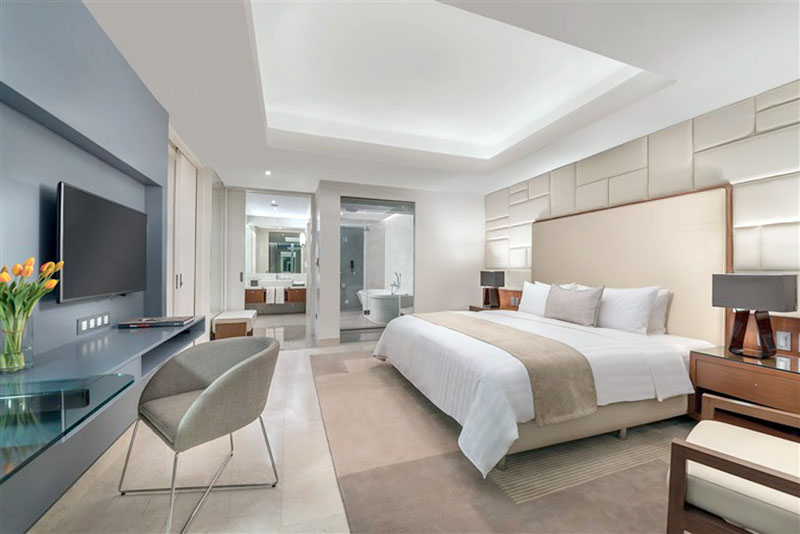
Suite at the Richmonde Hotel Iloilo
As we were lulled by the serenity of Andana Resort, we had to rush to the San Lorenzo Wind Farm. Indeed, it was a race to beat the sunset. A windfarm of 17 mills, it harvests 54 megawatts of energy. It is considered one of the biggest in Southeast Asia. Operational since 2014, San Lorenzo Wind Farm produces power beyond the seven-megawatt requirement of the entire province. The excess is sent back to “the grid.” The Panay Grid is connected to the grids of Negros, Cebu, Leyte and Luzon.
We reached the viewpoint with barely a lining of pink and purple, but the incredible sound and power of the windmills thrumming louder than the beat of my racing heart was worth the experience in the darkness.
Conventions, exhibitions and an evening stroll
One may fly into the new Iloilo International Airport today — as we did on Cebu Pacific — but between the 1930s to the early 2000s, the Mandurriao Airport was one of the busiest domestic terminals in the country.
In its stead now stands the Iloilo Business Park, 72 hectares of masterplanned township. Set to invest P35 billion for its development, visitors already enjoy choice accommodations between Courtyard by Marriott and Richmonde Hotel, a 1.1-km. open-plan retail area called Festive Walk, and offices.
A portion of the property has been carved out for the sole purpose of a convention center and donated by the developer to the city government. The Iloilo Convention Center (ICON), designed by architect Willy Coscolluela, credits its lines to two major festivals — Dinagyang Festival, a religious and cultural celebration held every fourth Sunday of January, and Paraw Regatta, the largest traditional sailing event in the Philppines held in February.
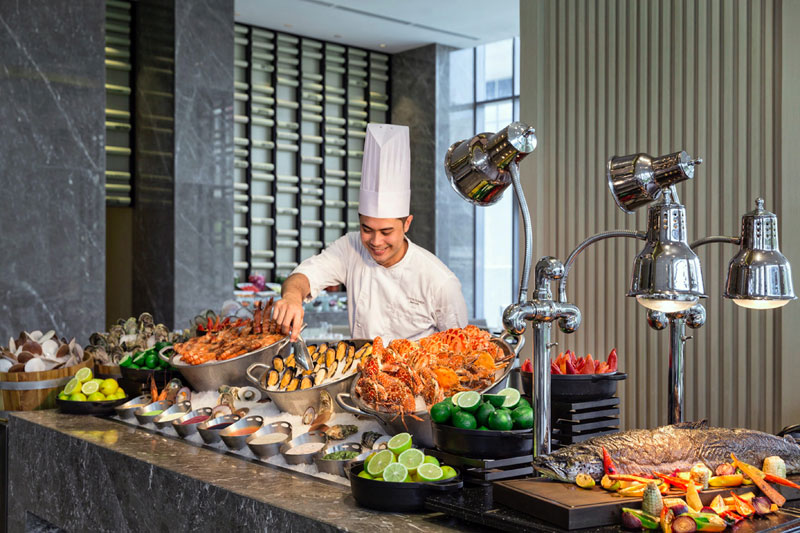
Unlimited seafood at Courtyard’s Runway Kitchen on Friday nights
Built in 2015, ICON is the only standalone convention center in Visayas and Mindanao. To date, the largest convention it hosted peaked with a foot traffic of 8,000 pax. Efforts of the local tourism office targets the international market for Iloilo as a MICE (Meetings, Incentives, Conferences and Exhibitions) destination. Junel Ann Divinagracia, Iloilo City tourism officer, shared a goal of about one to two conventions monthly for 2019. With Iloilo’s rich cultural heritage, dining experience and world-class facilities, Western Visayas competes in global MICE tourism.
To support MICE, choice accommodations are at Courtyard by Marriott with 326 rooms, and Richmonde Hotel with 149 rooms. By 2023, another 405 rooms by Belmont Hotel are expected to open. With this mix, one has a range of facilities to consider. More rooms are available within the city proper and accessible to the Iloilo Business Park.
If one is fortunate to enjoy accommodations within the Business Park, a 1.1- km. retail and leisure center is a stroll away. With low buildings and an open layout, the vibe is bright, relaxed and easy. A perfect way to wind down after falling in love…over and over again.
* * *
Cebu Pacific owns 51 percent of all flights operating in and out of its Iloilo hub, with a total of eight domestic connections and two international. CEB is the only airline flying from Iloilo internationally: 3x weekly to Hong Kong and Singapore.



















